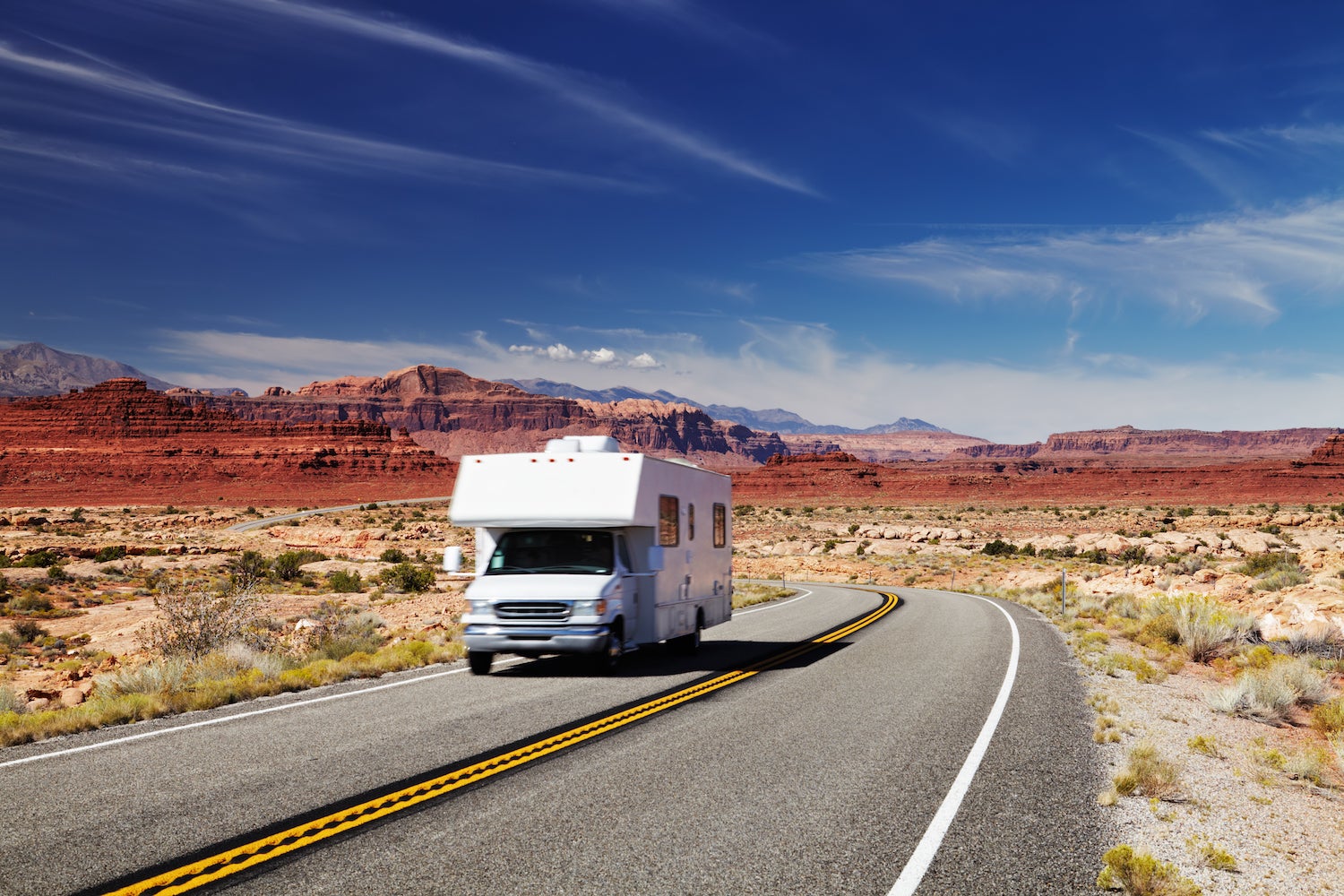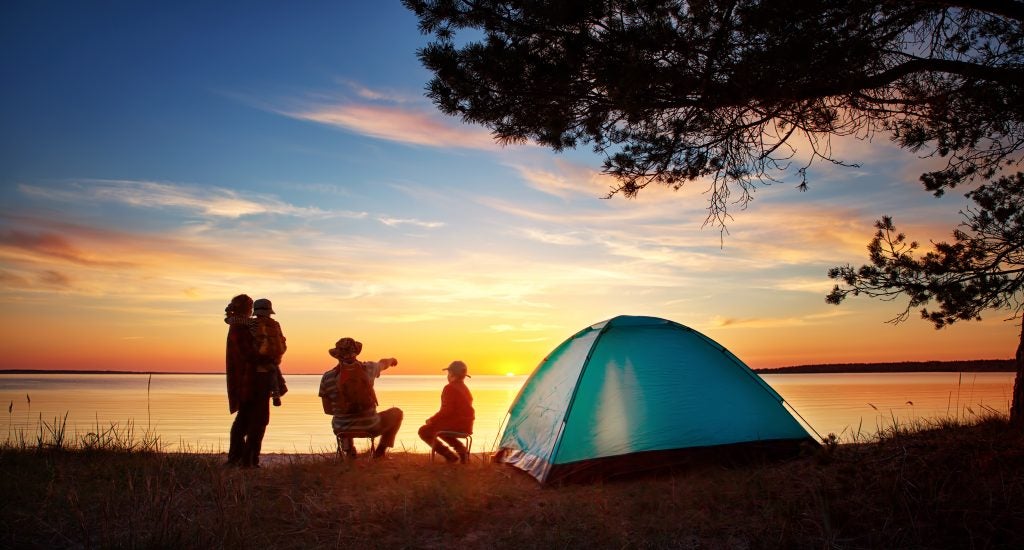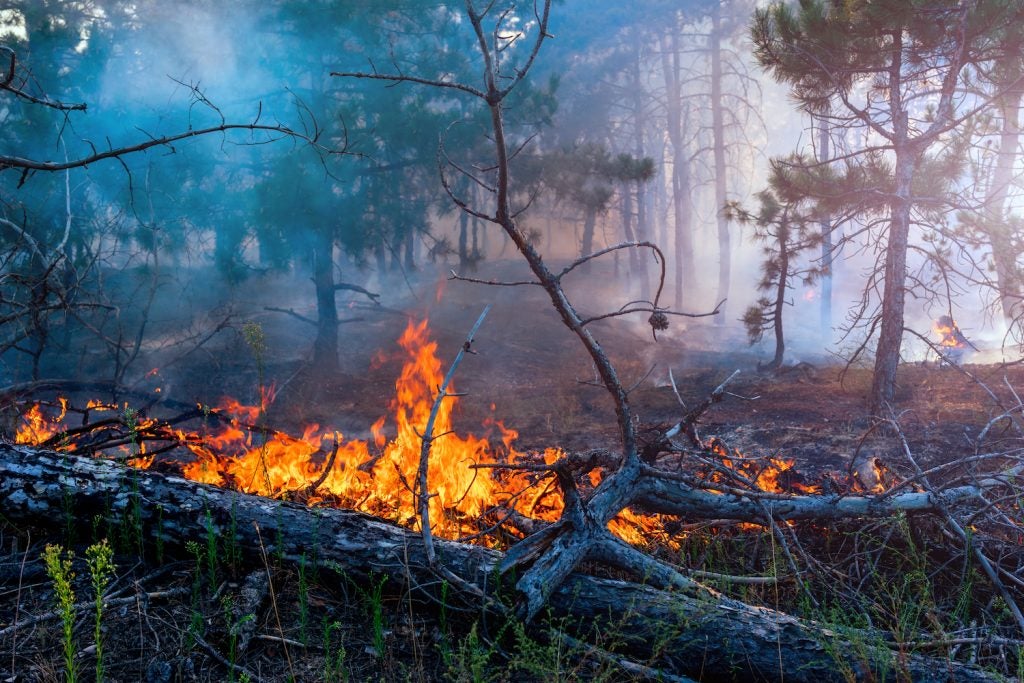RV campers sometimes get a bad rap. Recreational vehicles can be perceived as the Godzillas of automobiles: blundering through nature, leaving a trail of fumes and destruction in their wake. Tent campers often complain about RVs running their generators all night, filling a quiet, outdoor space with the buzz of electricity and modern conveniences.
It’s easy to jump to the conclusion that RVs are not eco friendly — but that’s not always true. RVs combine transport and accommodation, so four people traveling in an RV generally have a smaller carbon footprint than those flying to their destination and using a rental car to get around. Plus, you’re probably occupying a smaller square footage than you would at home, which means using less energy.
Those who are mindful about how they camp, travel, and/or live in their RV can turn their rigs into a responsible lifestyle choice.
23 Ways To Go Green in an RV
Here are some things you can do to lessen your impact on the environment when you’re traveling in an RV.
1. Choose a smaller RV
Good things come in small packages, and that goes for your RV too. Compact RVs are lighter and burn less fuel; they’ll also use less power when you’re plugged in as there’s a smaller space to heat or cool.
Full-time campers, Shari and Hutch, live in a “canned-ham” trailer, which is barely bigger than a teardrop. And they’re perfectly content with their 72 square feet of living space:
“We are often asked if we plan to upgrade to a larger, more modern RV and our answer is always….Nope! Hamlet fits our values of upcycling, living simply, and being outside as much as possible. Something larger might allow a few more modern conveniences, but if we haven’t needed them in over 5 years, why upsize?”
2. Get a solar panel
Install a solar panel hookup to your RV and you can harness the power of the sun instead of tapping into the grid. This is handy during the day for charging batteries or keeping the fridge running, plus it may free you up to camp in places without a traditional power source. Solar panels are lighter and more portable than ever before, making them easy to transport.
3. Or try wind power
There’s also the option to install wind turbines. This technology is similar to the giant windmills you see, scaled down to fit on top of your RV. Be aware that these can be a bit noisy and don’t always use their full potential.
4. Pack light
When you have extra storage in your RV, it’s tempting to fill it with stuff you might need, just in case. Think carefully before you cram a cupboard full of inflatable swans, because the heavier your RV is, the more fuel it uses—and every little bit counts.
5. Aim for an average speed of 55mph
The road may be calling you, but try to resist the need for speed. The faster you go, the more fuel you vaporize. The sweet spot for RVs is an average of 55mph, so take the pedal off the metal and enjoy the ride.
6. Shop secondhand
Consider buying your RV and fit-out gear secondhand. Look for gently-used cushions, shelving, appliances, and more; it can save you money and greatly reduce your carbon footprint.
7. Don’t skip a service
Keep your RV up-to-date on its maintenance, from oil changes to replacing air filters. A healthy RV is an energy-efficient RV, and bonus: getting regular check-ups lessens your chances of being stranded in the middle of nowhere.
8. Check your tire pressure
While we’re on the subject of RV maintenance, check your tires regularly. Your tire pressure affects your gas mileage, so if you’re running flat you’re wasting fuel. Find out the correct pressure for your vehicle’s tires and keep an eye on your wheels.
9. Use renewable materials
Starting from scratch with the inside of your RV? That’s a perfect opportunity to be as eco friendly as possible. Try for renewable materials like bamboo, recycled steel, or at least materials that can be recycled down the track.
10. Avoid disposable items
Paper plates, cutlery, and napkins might make life easier, but single-use items are terrible for the earth. Invest in real dishes, cups, forks—the whole shebang. Better yet, get them secondhand or use ones you already have. And whatever you do, avoid plastic bottles of water; fill up reusable bottles instead.
11. Conserve water
In an RV, you’ll use water to wash your dishes (see: reusable items), plus in your toilet and shower if you have them. All the standard water-saving tips apply here: take short showers and be conservative when you wash dishes. When it comes to toilet water, most RV toilets use very little, so the benefit of sanitation outweighs any water saving upside. You should check your RV toilet capacity, though, to determine if your rig uses more water than others.
12. Park in the shade
Instead of cranking up the AC on a hot day, look for a shady spot to park. Consider the direction of the sun and any surrounding trees or landscape features that might provide shade. This automatically keeps your RV cooler, no artificial air conditioning needed. It can also help keep the gas in your tank cool, which prevents evaporation.
13. Make your own shade
If your RV doesn’t already have a pull-out awning attached, consider adding one. Not only will it save the day when you can’t find any natural shade, it’ll contribute to keeping your RV cooler without relying on power.
14. Insulate your RV
Double-glazed windows and insulated walls can help keep you toasty in cold temperatures without switching on an electric heater. You could even take it a step further and add an RV skirt, which blocks airflow underneath the RV. It keeps your inside warmer, but is most practical for RVs that aren’t constantly on the move.
15. Use enzyme-based tank cleaners
Chemical cleaners are harmful to the environment, but you’ve got to clean your RV’s tank. Turn instead to non-toxic enzyme-based tank cleaners, which don’t contain the same pollutants.
16. Buy RV-friendly toilet paper
All that used TP has to go somewhere, and the last thing you want it to do is clog your toilet. Look for toilet paper that is designed to dissolve quickly. While you can buy TP specifically made for use in an RV, many at-home brands may be suitable too. Do a quick pre-departure test by dropping a few sheets in a jar of water and giving it a shake; if it breaks down within seconds you should be good to go.
17. Swap regular light bulbs for LED bulbs
LED bulbs use less energy and let off less heat than incandescent bulbs, keeping your RV cooler and brighter. Depending on your lighting system, making the switch may just be a matter of matching your existing bulb bases with LED ones.
18. Pick energy-efficient appliances
If you’ve got a fridge, washing machine, shower, or faucet in your RV, you can make green choices to reduce your energy and use. Install low-flow shower heads and faucets where possible, and choose energy-efficient appliances. Remember to switch them off when not in use!
19. Fill up with green fuel
For RVs that run on diesel, consider using a mix of diesel and bio-diesel blends if it suits your RV. Biodiesel blends diesel fuel with natural plant oils, like soybean oil. Some gas stations sell biodiesel right out of the pump, but it is possible (though daunting) to blend your own. Do your research to see if it’s a viable option for your vehicle.
20. Recycle
When you live in a small space, clutter can pile up quickly but that’s no excuse to create more waste. Though you may want to throw out everything as soon as possible, hang on to your recyclables until you can recycle them. Keep clean, empty containers in a designated space, like in a cardboard box under the sink.
21. Shop local
Drive past the major supermarket chains and pull over at farmers markets for your fresh fruit and vegetables. Buy direct and you’ll reduce packaging and transport costs, which is an environmentally friendlier way of sourcing your food. Besides, buying local and in season tastes great! Don’t forget your reusable shopping bag.
22. Tread lightly
RVs are heavy and can do serious damage to the ground beneath their tires. Avoid going offroad, which can damage plant life and leave rutted tire tracks in your wake. The principles of ‘leave no trace’ apply with RVs just as they do with tent camping: be aware of where you park your vehicle, especially if the ground is wet.
23. Look for alternative sources of heating water
Nothing beats a hot shower or hot water for washing dishes, but heating water can be a real energy suck in an RV. If you’re in sunny climates, a solar water heater can be an option for showers; for washing up water, you could use a good old fashioned fire.
The trick to making your RV greener is in your overall approach to RV camping; some actions may seem small, but every little bit counts.
The Dyrt is the only camping app with all of the public and private campgrounds, RV parks, and free camping locations in the United States. Download now for iOS and Android.Popular Articles:
Articles on The Dyrt Magazine may contain links to affiliate websites. The Dyrt receives an affiliate commission for any purchases made by using such links at no additional cost to you the consumer.



